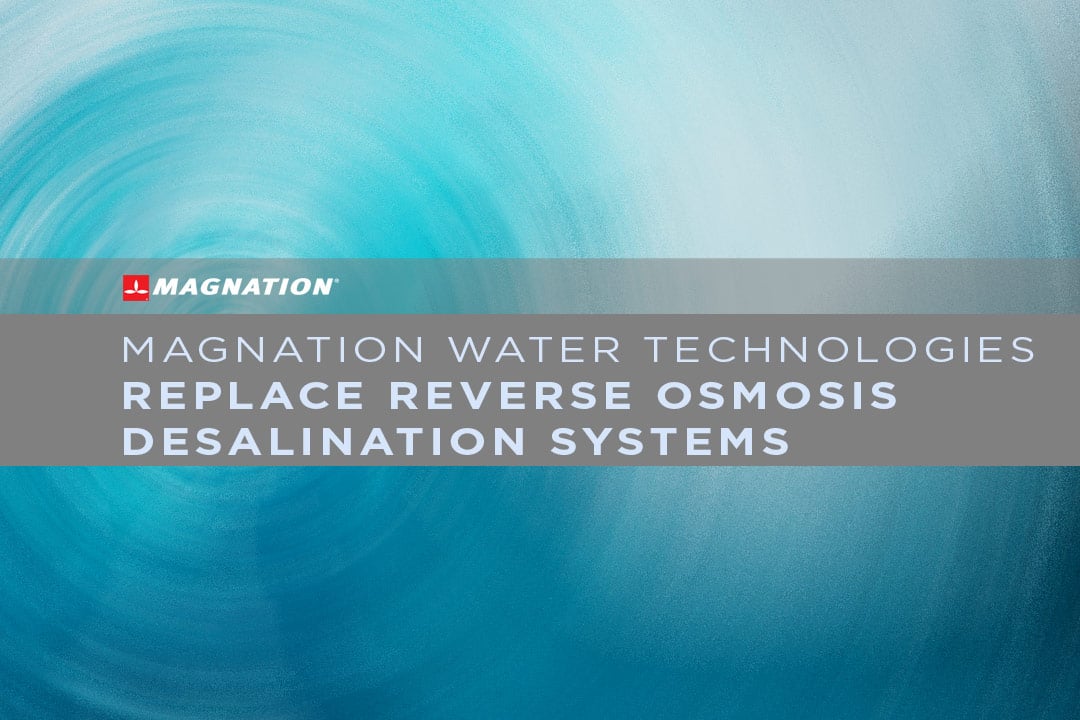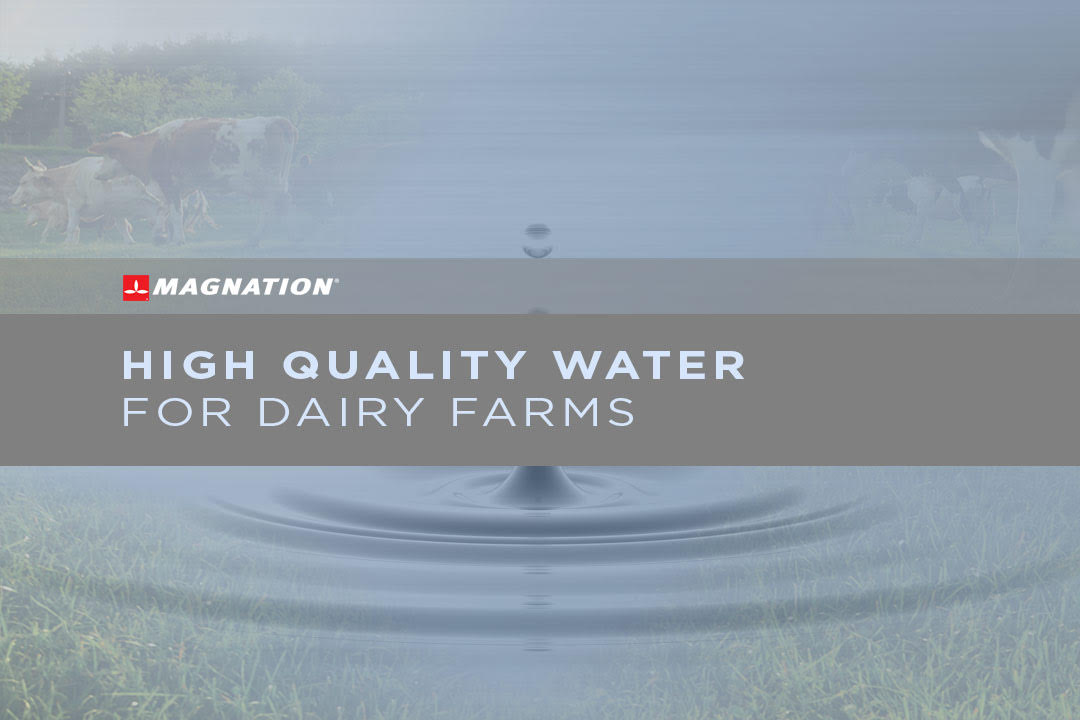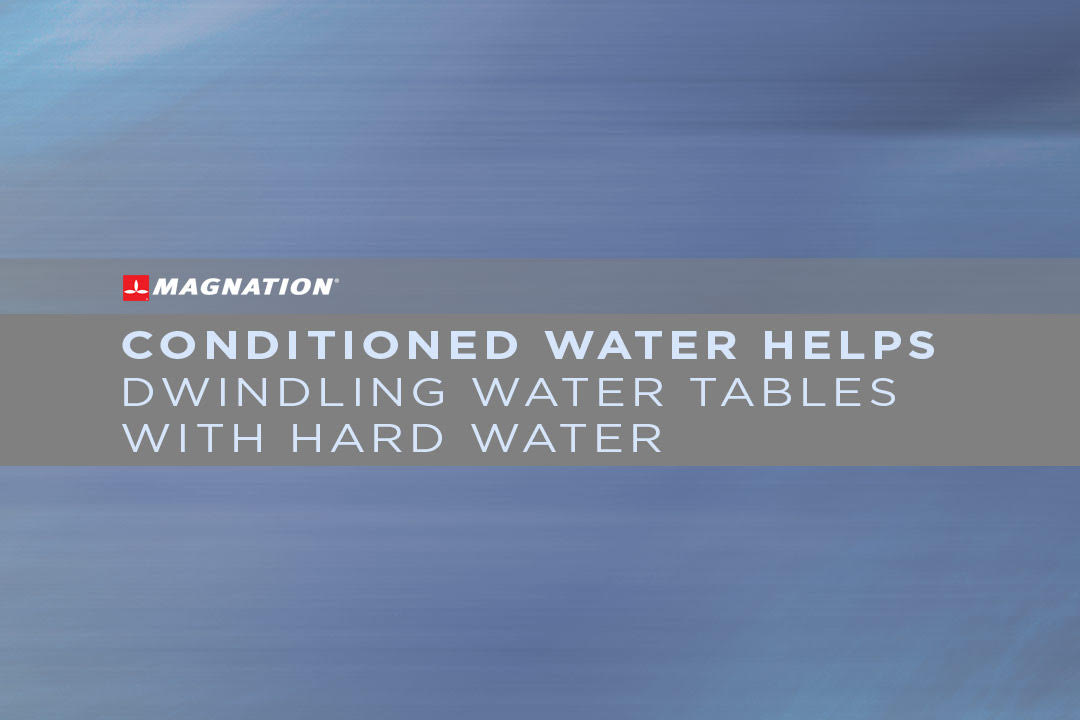
Magnation Water Technologies Replace Reverse Osmosis Desalination Systems
Increases in population have hastened the depletion of natural freshwater sources. As a result, the potential of solving water supply problems through desalination has received more attention.
Desalination includes any process that removes impurities, minerals, organic contaminants, and salt from brackish water or seawater. The processes treat the feed water source and produce two streams of water. While the treated fresh water stream has low concentrations of salts and minerals, the brine stream has high concentrations of salts and minerals. After removing the brine solution, a desalination process delivers fresh water ready for human consumption, irrigation, or industrial applications.
Desalination facilities often use brackish water as a source. Because brackish water has less salt and less suspended solids than sea water, the decreased need for pretreatment lowers the overall cost of desalination. No matter the source water used for desalination, disposal of the brine increases financial and environmental costs.
Although the use of desalination plants dates back to the late 1920s, advances in technologies have improved the effectiveness of other desalination methods. The two most common methods used for desalination include the use of thermal distillation and the use of membrane distillation. Desalination plants used for producing large amounts of fresh water may use multi-stage flash distillation (MSF), multi-effect distillation (MED), or vapor compression distillation (VCD). While offering promise for energy use, solar distillation normally produces smaller amounts of fresh water.
Systems based on membrane distillation treat the feed water source by applying a driving force to the source. Whether used for electrodialysis (ED), electrodialysis reversal (EDR), or reverse osmosis, the driving force pushes water to feed through membranes. The membranes prevent the passage of salt ions. For both ED and EDR, some type of electrical force serves as the driving force. In contrast, reverse osmosis (RO) relies on a pressure gradient as the driving force.
Reverse Osmosis Systems Have Advantages and Disadvantages.
Reverse Osmosis has gained widespread use for desalination. However, several drawbacks exist. The pressure gradient needed to drive water through membranes involves achieving as much as 70 times atmospheric pressure. RO desalination plants rely on large numbers of pumps and associated equipment–and energy–to maintain the high level of pressure.
Reverse Osmosis Desalination Block Diagram and System
Feed water flows into the input of the RO system membrane. Within the membrane, the spiral design of individual elements that filter the feed water, establish spacing between the fresh water and brine streams, and allow fresh water to flow from the center of the membrane. The brine stream flows from the outer areas of the membrane.
RO membranes have small pores that not only prevent salts from passing through the system but also stop sugars, pesticides, herbicides, and organic compounds from entering the fresh water stream. While the small size of the RO membrane pores block salts and contaminants, an RO only works with pre-treated water. Pretreatment prevents any biological growth, scaling, or suspended solids from plugging the membrane.
Enlarging an RO system to increase the treatment of feed water and the production of fresh water requires the connection of multiple RO membranes in series. To maintain the pressure gradient needed to drive water through the multiple membranes, the enlarged RO system fits within a pressure vessel. The additional membranes provide the post-treatment that ensures that the water remains suitable for human consumption.
Magnation Water Technologies Provide Advantages without the Costs of Reverse Osmosis
Magnation Water Technologies offers products that condition water through magnetics and turbulence. Because the combination of magnetism and applied physics decreases the surface tension and viscosity of water, flow increases. Products such as the Turbulator and AquaBolt do not require chemicals to improve water quality.
Magnation Water Technologies Aquabolt
When compared to RO systems, Magnation products do not require high pressures to push water through a membrane. Without the need for high pressures, the Magnation products do not rely on large numbers of pumps, complex piping systems, or other equipment. Magnation water conditioning systems do not consume energy.
The design of Magnation’s products effectively separates contaminants and bacteria while reducing the mineral content that leads to scale. While Magnation devices can work as the pretreatment stage for RO systems, Magnation products do not require the pretreatment of water prior to the actual water conditioning. In contrast to the multiple pre-treatment, treatment, and post-treatment stages seen with RO systems, a single Magnation device reduce or eliminates the amount of total dissolved solids, calcium carbonates, bicarbonates, iron bacteria, nitrates, sulfates, algae, and biofilm. Using a Magnation Turbulator as an example, the smaller, efficient footprint of the Magnation device has significantly lower direct and indirect costs than an RO system.
Magnation Water Technologies Turbulator
If you would like to learn more about the cost- and energy-efficient water conditioning solutions offered by Magnation Water Technologies, contact one of our professionals by calling 888-820-0363.










Comments
Add Comment